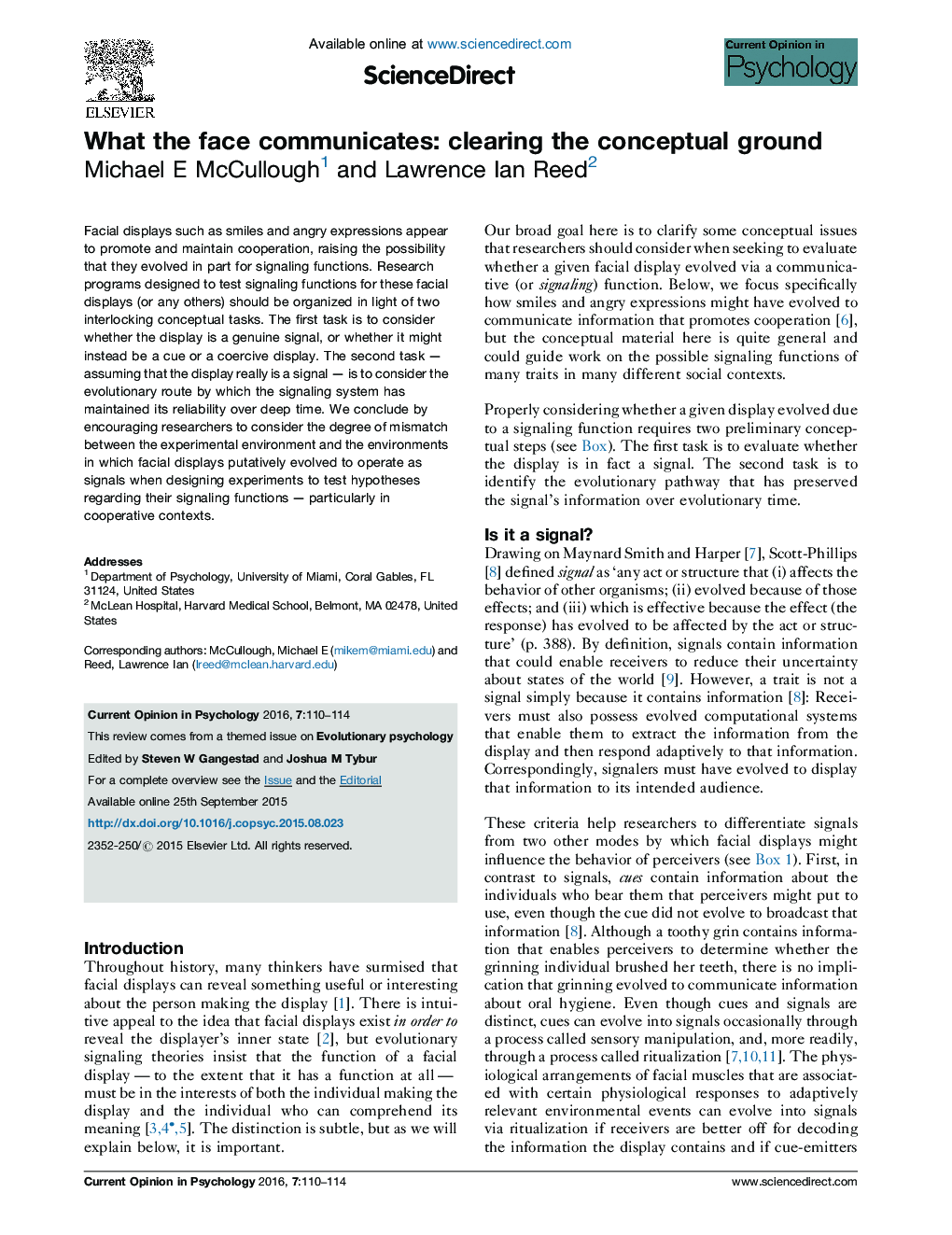| Article ID | Journal | Published Year | Pages | File Type |
|---|---|---|---|---|
| 879365 | Current Opinion in Psychology | 2016 | 5 Pages |
•We explore facial expressions of emotion in light of evolutionary signaling theory.•We explicate the adaptationist definition of signal.•We differentiate signals from cues and coercion.•We describe the four processes by which displays with signaling functions might remain evolutionarily stable.•We make recommendations for future experimentation on the possible signaling functions of emotion displays.
Facial displays such as smiles and angry expressions appear to promote and maintain cooperation, raising the possibility that they evolved in part for signaling functions. Research programs designed to test signaling functions for these facial displays (or any others) should be organized in light of two interlocking conceptual tasks. The first task is to consider whether the display is a genuine signal, or whether it might instead be a cue or a coercive display. The second task — assuming that the display really is a signal — is to consider the evolutionary route by which the signaling system has maintained its reliability over deep time. We conclude by encouraging researchers to consider the degree of mismatch between the experimental environment and the environments in which facial displays putatively evolved to operate as signals when designing experiments to test hypotheses regarding their signaling functions — particularly in cooperative contexts.
